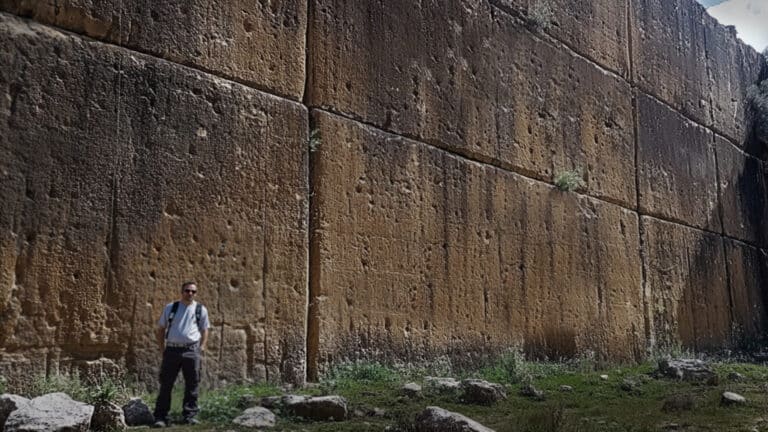Although we discussed numerous prehistoric megastructures on our channel, the ancient ruins of Baalbek in modern-day Lebanon might be the most compelling evidence of an advanced ancient civilization missing from our history books. This monumental complex, with its immense megalithic stones, some weighing over a thousand tons, defies any explanation through the lens of conventional archaeology.
Baalbek is situated in northeastern Lebanon, approximately 60 miles from Beirut, making it a somewhat challenging destination to reach in present times. Perched 3,000 feet atop a sacred hill in the fertile Bekaa Valley, long before the Romans conquered the area and erected their monumental Temple of Jupiter, and even before the Phoenicians built a temple to the god Baal, Baalbek was home to the largest stone block construction ever discovered in the world.
The mainstream narrative about Baalbek’s history is one of Roman ingenuity. The Temple of Jupiter, one of the largest temples in the Roman Empire, still stands as a testament to the power and reach of Roman architecture. However, beneath the Roman construction lies a series of enormous megalithic stones, known as the trilithons, which form part of the foundation of the temple complex.
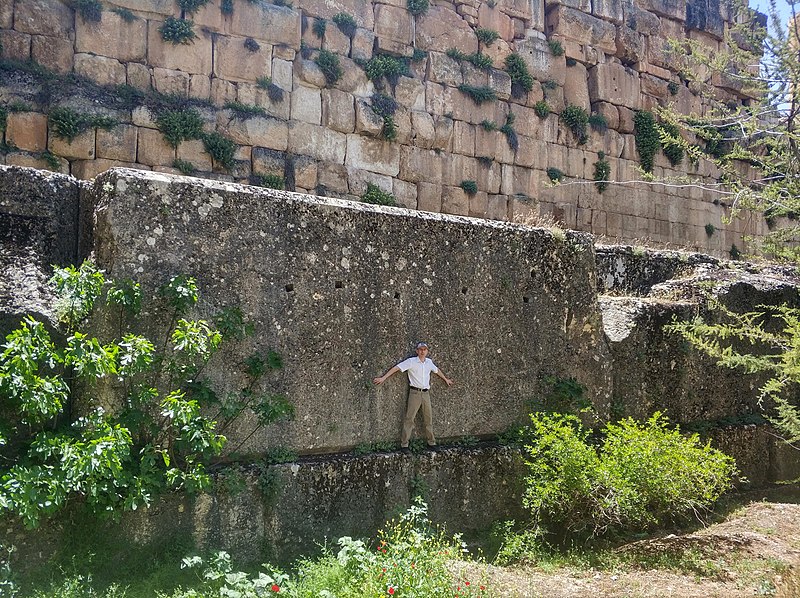
These trilithons, each measure over 19 meters (62 feet) in length, 4.2 meters (14 feet) in height, and 3.6 meters (12 feet) in thickness, and weigh approximately 900 metric tons, making them one of the largest stones ever moved, lifted, and stacked in human history. To put this into perspective, each stone is roughly 36 times the weight of the stones used to construct Stonehenge and approximately 10 times the weight of the largest stones used in the construction of the Great Pyramid of Giza.
Despite their immense size, these stones were somehow transported from a quarry located over half a mile away and raised to a height of 30 feet, or 9 meters, on top of these smaller 400-ton blocks to form part of the foundation of the Heliopolis complex, upon which the Temple of Jupiter was later built. The precision with which these stones were cut and aligned is extraordinary, as they fit together almost seamlessly, with gaps so narrow that not even a piece of paper can fit between them.
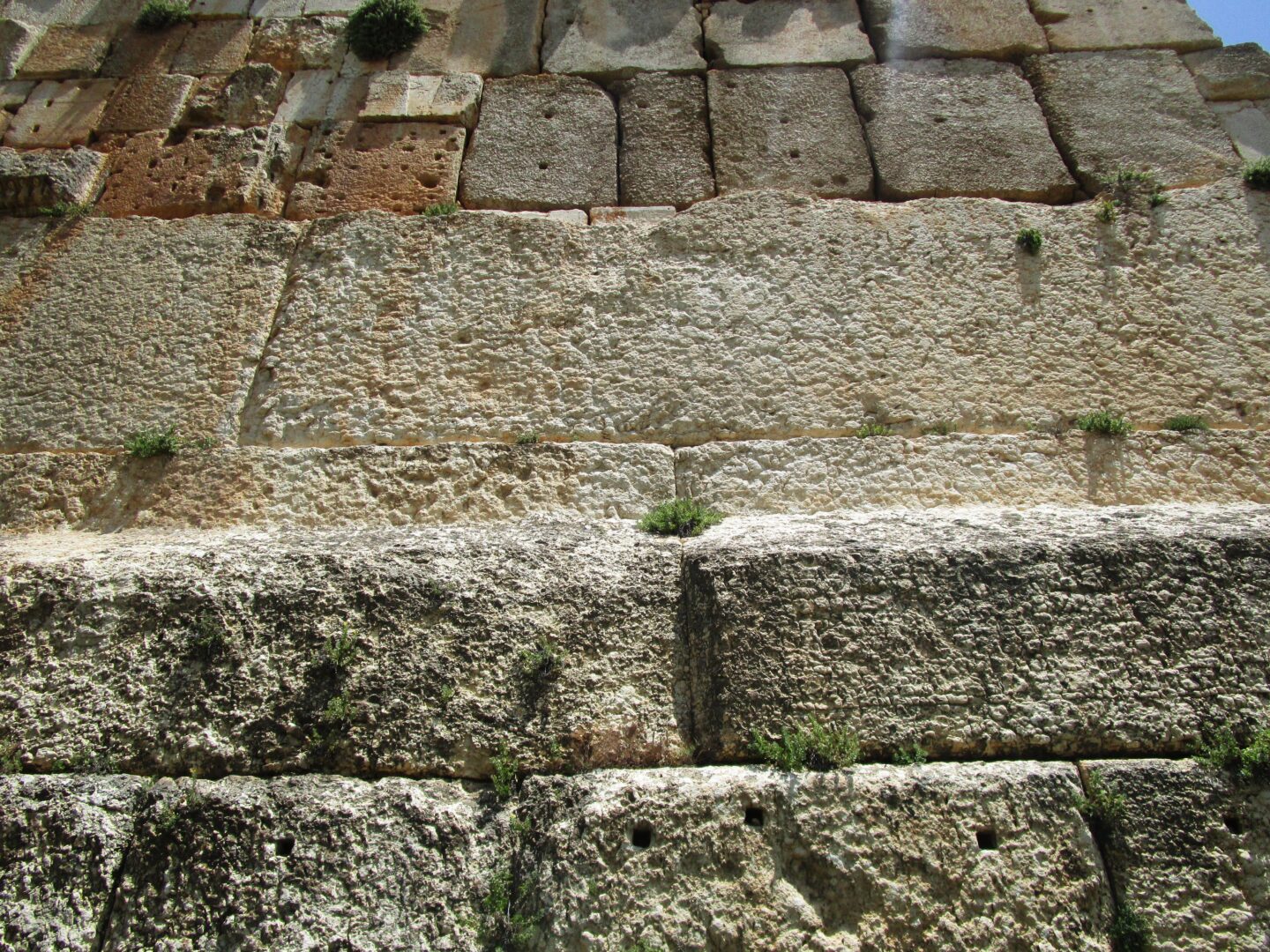
Unlike typical Roman construction, which focused on grandeur and aesthetics in visible structures, the trilithons were not designed to be seen. They were buried within the foundation, hidden from view, and seem to have been laid out primarily for structural purposes. This raises the question of why a civilization would go to such lengths to move and position these massive stones only to bury them.
There isn’t any historical documentation from the Romans detailing how they achieved such an architectural feat. The Romans, renowned for their meticulous record-keeping, documented nearly every major construction project they undertook. Yet there is no Roman account explaining the process of moving these immense stones or how they were incorporated into the foundation of the Temple of Jupiter.
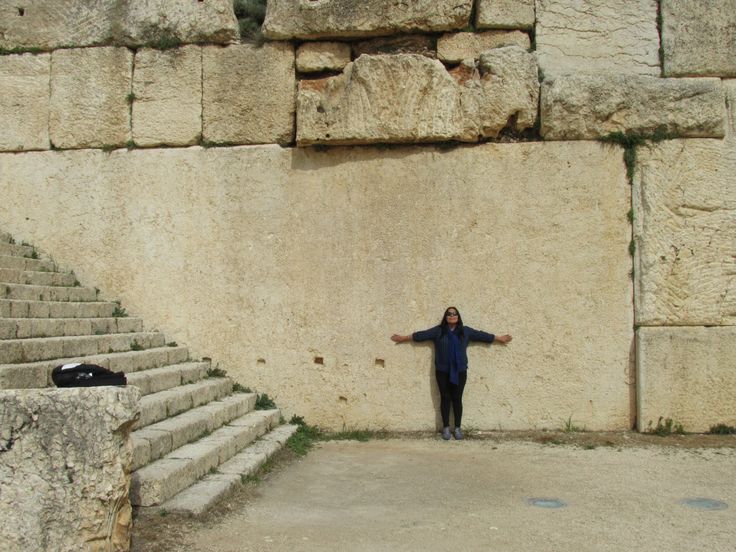
But the trilithon stones are just the beginning. On this side of the Temple of Jupiter, there’s another giant megalithic work, with this enormous block that weighs around 800 tons. Just compare the size of the block to the tourists nearby. Right next to it, is the south megalithic wall, where there are numerous such blocks with flat surfaces. Look at the perfect fitting between them. Some of the fittings are even at an angle, making the megalithic wall even more impressive and sophisticated. The joint is so well-fitted that it looks like a scratch rather than a place where blocks weighing several hundred tons meet. This is clearly the work of a far superior civilization than the Romans, Greeks, or Phoenicians. Even a child can see the clear difference between the superior megalithic construction at the foundation and the inferior Roman work built on top.
If we look closer at the surface of the giant stone blocks, we can see these strange parallel scratches. They can be seen in different parts of the complex on various megalithic stone blocks. We can also see them on the trilithon stones themselves. These scratch marks have lengths of around 3 meters or 10 feet and are perfectly parallel. This means they could not have been made with primitive tools. Moreover the marks look more like some kind of machine marks.
If you’ve watched our documentaries before, you’ll probably notice that these marks are similar, if not identical, to the marks left on other prehistoric megalithic sites, such as the Yangshan quarry in China, which consists of this gargantuan megalithic block estimated to weigh 16,000 tons. As you can see, the Yangshan Quarry in China has the exact same tool marks that are seen on the massive stones at Baalbek.
Similarly, in the ancient city of Petra in Jordan, tool marks that closely resemble those on the Yangshan blocks have also been identified. The marks can be seen in the prehistoric parts of Petra, which were created thousands of years before the Nabatean Kingdom settled the city in the 4th century BC.
Shockingly, comparisons with modern machinery reveal striking similarities in the striations produced by contemporary mining equipment, which suggests a level of sophistication in ancient tooling methods that parallels modern technology. Does this mean that the prehistoric civilization that built all of these gigantic megalithic sites had some kind of advanced technology similar to our modern machinery and heavy equipment?
Our documentary on the prehistoric megastructures at Baalbek would not be complete without talking about the site with the most shocking and paradigm-shifting discoveries – the Baalbek quarry.
This limestone quarry, located about a mile from the main temple complex, is the place from which the majority of the giant stone blocks at Baalbek were extracted, including the massive trilithon stones. However, the quarry also houses unfinished monoliths, which are even more fascinating. One of the earliest and most famous discoveries in the Baalbek quarry is the Stone of the Pregnant Woman. This monolith, named after a local legend, is approximately 68 feet long, 14 feet high, and 14 feet wide, weighing over 1,200 tons. This stone lays at a raised angle with the lowest part of its base still attached to the quarry rock as though it were almost ready to be cut free and transported to its presumed location Its immense size raises questions about how the ancients intended to transport and use it.
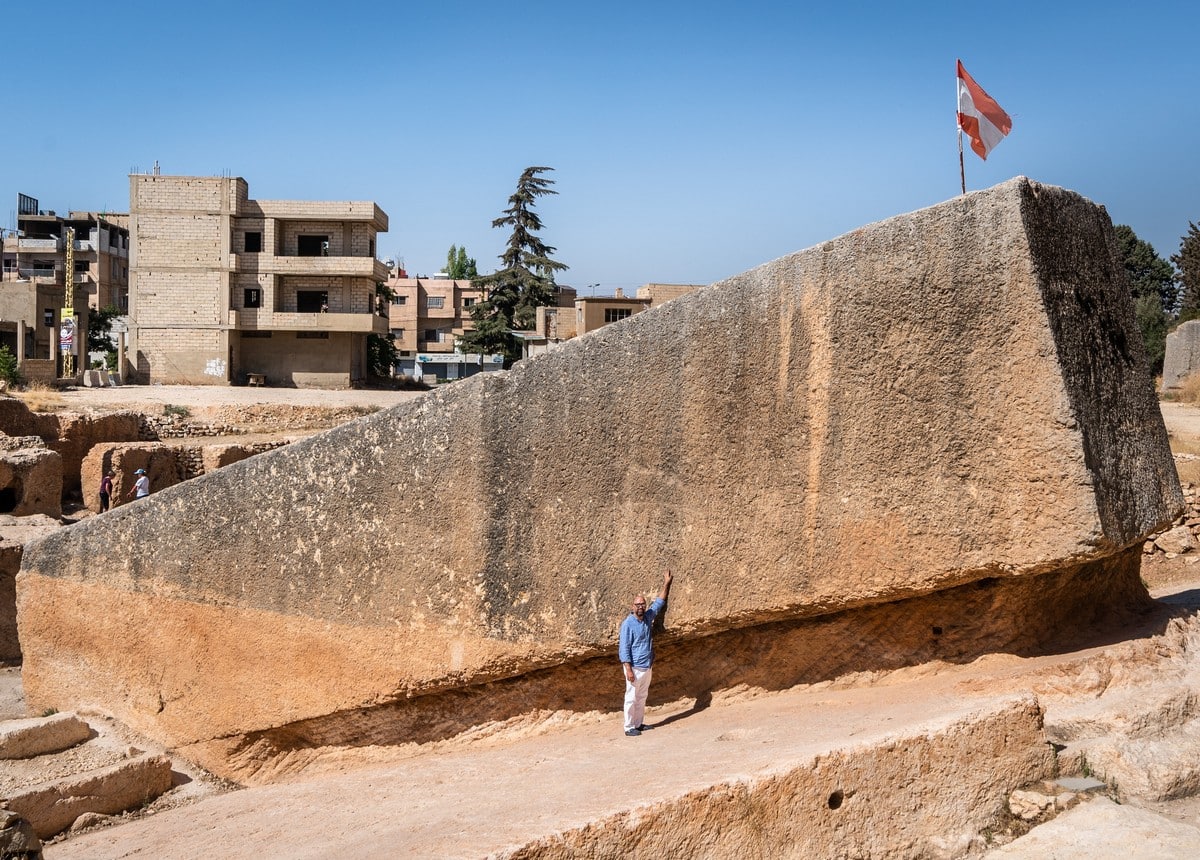
At Jungfrau Park in Interlaken, Switzerland, there’s an intriguing model that demonstrates the number of modern cranes needed to lift the Stone of the Pregnant Woman. Even if we assume this prehistoric civilization had the same crane technology as we have today, there’s still not enough space for all the requiered cranes to be placed there. And even if they lift the block, how will they transport it to the temple?
Initially, a large part of the monolith was buried underground, but after a long process of excavation, in 2014, a team from the German Archaeological Institute led by Jeanine Abdul Massih of the Lebanese University made an ever more shocking discovery. It was revealed that next to the Stone of the Pregnant Woman, underneath, there’s an even more enormous monolith, which weighs 1,650 tons.
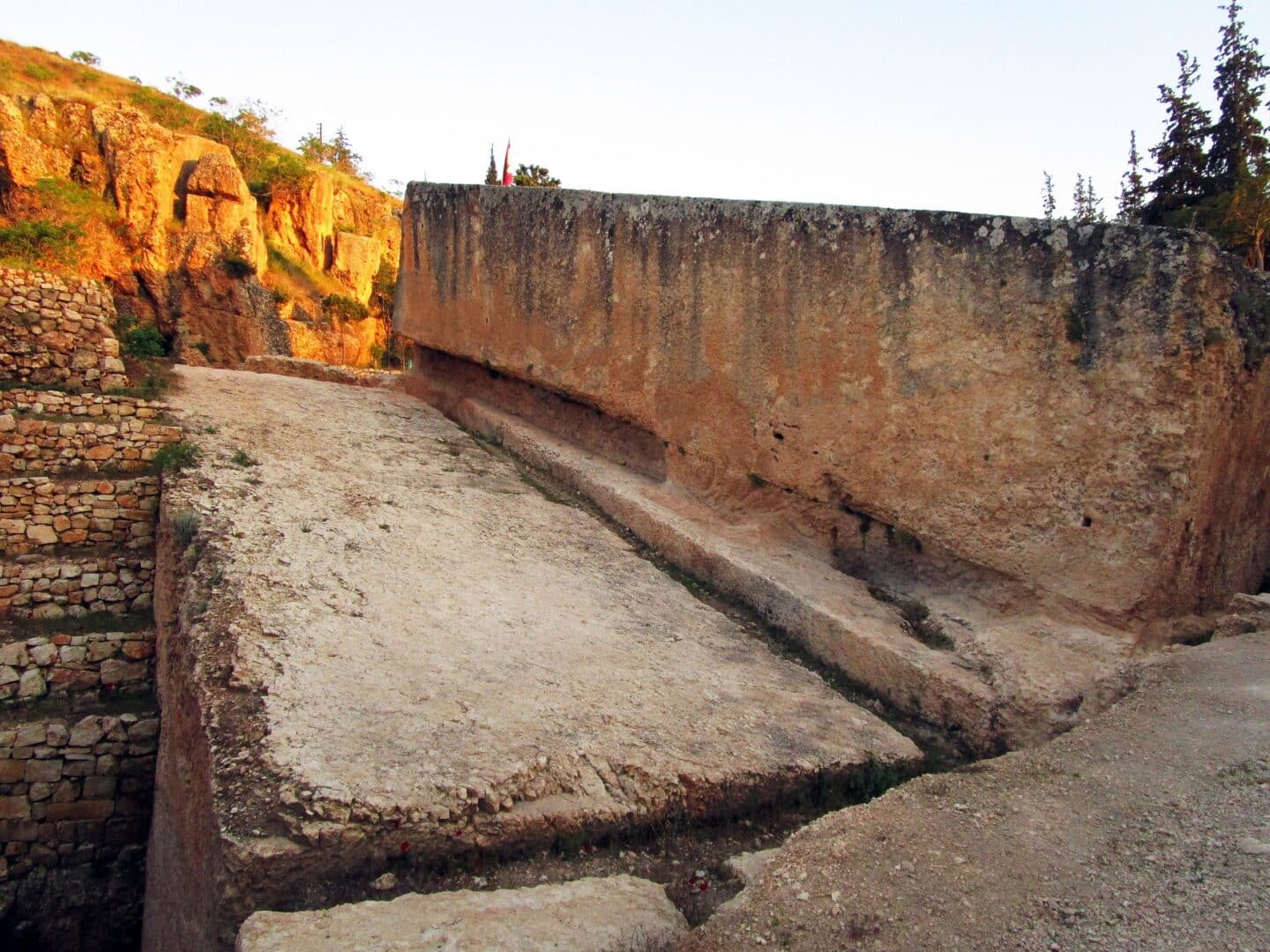
This stone became known as the Forgotten Stone, and as of today, this is the largest stone block ever quarried in the world. In this aerial photo, you can compare the Forgotten Stone to the Stone of the Pregnant Woman. The size difference is considerable. Considering the stone block was discovered just ten years ago, who knows how deep the quarry goes and what else will be discovered in the future. Who knows what other giant prehistoric megaliths are out there, buried beneath the ground?The reason these stones remain an enduring mystery to modern scientists, including engineers and archaeologists, is that the techniques used for quarrying, transporting, and precisely positioning them are beyond the capabilities of any known ancient or contemporary builders.
The path to Baalbek is uphill, traversing rough and winding terrain, and there is no evidence that a flat surface for hauling was ever constructed in ancient times. Furthermore, once the massive blocks reached the site, the challenge of how they were lifted and placed with such precision arises. Even if we assume the ancients could have used large pulley systems, the arrangement and positioning of the stones offer no feasible location where such an apparatus could have been installed.
The very fact that the earth swelled the entire quarry proves that the site could be tens of thousands of years ago, placing it in the pre-diluvian era. This could also explain the sudden and abrupt abandonment of the quarry. A cataclysmic event—whether an earthquake, flood, or some other natural disaster—could have forced the builders to halt their work unexpectedly, leaving these colossal stones unfinished and in place.
In conclusion, the prehistoric megalithic work at Baalbek remains one of the most awe-inspiring evidence of an advanced pre-historic civilization that possessed technology far superior to any known ancient civilization. There are many theories, myths, and legends surrounding the site.Ancient legends say that Baalbek is the most ancient building in the world and was built by Cain, the son of Adam, 133 years after the Creation, with the help of Nephilim giants, who were punished for their iniquities by the great flood. Some even believe the giant foundation was some kind of landing pad for extraterrestrials.
The Baalbek stones and quarry continue to fascinate and mystify people around the world. Whether viewed through the lens of myth, speculative history, or scholarly research, the legends surrounding Baalbek reflect humanity’s enduring curiosity about its ancient past and the seemingly inexplicable achievements of pre-historic civilizations.

